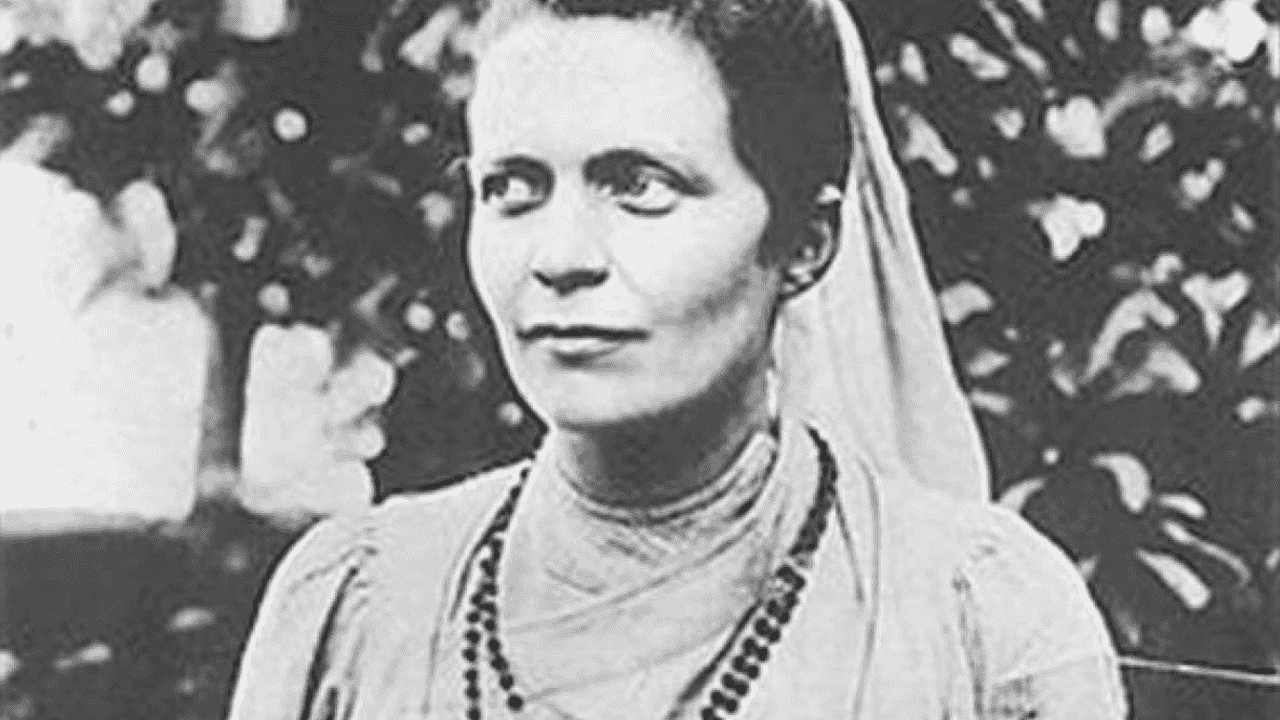Today, October 13, 2025, marks the 114th death anniversary of Sister Nivedita — a British-born woman who considered India her motherland and dedicated her entire life to serving this nation. On this day, we remember her unparalleled contributions.
From Margaret Elizabeth to Sister Nivedita
Margaret Elizabeth Noble was born on October 28, 1867, in Ireland. After her father’s death, she began working as a teacher at the age of 17, and by 25, she had opened her own school.
In 1895, her meeting with Swami Vivekananda in London changed the course of her life. Deeply influenced by his spiritual personality and his words about India’s plight, Margaret decided to come to India in 1898.
On March 25, 1898, Swami Vivekananda initiated her into spiritual life and gave her the name “Nivedita” (meaning the dedicated one). She thus became the first Western woman to formally embrace the Indian path of renunciation.
The Creator of India’s First National Flag – An Untold Story
One of Sister Nivedita’s lesser-known but remarkable contributions was the design of India’s first national flag. During her visit to Bodh Gaya in 1904, she designed a flag centered around the Vajra (the weapon of Indra).
Features of the flag:
Red and yellow colors symbolizing freedom and victory
Vajra in the center representing strength
The words “Vande Mataram” written in Bengali
108 lamps decorating the border
White lotus symbolizing purity
This flag was displayed at the Congress Exhibition in 1906, and is currently preserved at the Acharya Bhavan Museum in Kolkata.
Pioneer of Women’s Education
Sister Nivedita’s most significant contribution was in the field of women’s education in India. On November 13, 1898, the day of Kali Puja, she founded a school for girls in Bosepada Lane, Baghbazar.
Her educational contributions included:
Combining Indian culture with modern education
Teaching of Vedas and Upanishads
Emphasis on vocational training
Breaking barriers of caste and class
Inspiring a sense of national pride
At her school, “Vande Mataram” was sung as a prayer — a unique way to awaken national consciousness.
Humanitarian Service During the Plague Epidemic
In 1899, when plague struck Calcutta, Sister Nivedita risked her life to serve the afflicted. She:
Organized relief work with the Ramakrishna Mission
Led sanitation campaigns
Personally cared for patients
Involved students in relief efforts
Spread awareness through newspapers
One famous incident recounts how she held a dead child in her arms to comfort the grieving family — a testament to her compassion.
Contribution to the Freedom Struggle
Sister Nivedita also played an active role in India’s freedom movement:
Supported the Swadeshi Movement of 1905
Actively opposed the Partition of Bengal
Provided financial and logistical help to revolutionaries
Worked with Aurobindo Ghosh in editing the Karmayogin newspaper
Maintained ties with members of the Anushilan Samiti (a revolutionary group)
Literary and Cultural Contributions
Sister Nivedita was also a prolific writer. Her major works include:
Kali the Mother
The Master as I Saw Him
Cradle Tales of Hinduism
Religion and Dharma
She also inspired Abanindranath Tagore and others, contributing to the foundation of the Bengal School of Art.
Final Journey and Legacy
Sister Nivedita passed away on October 13, 1911, in Darjeeling, at the age of 44.
Her epitaph reads:
“Here rests Sister Nivedita who gave her all to India.”
Relevance in Modern India
Sister Nivedita’s life remains deeply relevant today:
Her work in women empowerment
Integration of Indian values in education
Her selfless spirit of service
Promotion of national unity
Revival of India’s cultural pride
Why This Matters for Your Exam Preparation
Studying Sister Nivedita is essential for UPSC and other competitive exams because:
From a Historical Perspective:
She was a key figure in the freedom movement who contributed to education, healthcare, and nationalism.
From a Sociological Perspective:
Her efforts in women’s education and social reform were vital in shaping modern India.
From a Political Science Perspective:
Her role in awakening Indian nationalism and designing the first national flag is noteworthy.
From an Ethics Perspective:
Her selfless service during the plague and spirit of sacrifice remain inspirational even today.
From a Current Affairs Perspective:
Her humanitarian work serves as a model during modern crises like COVID-19.
Candidates should pay special attention to key dates, contributions, and her philosophy, as these often appear in exam questions.
Would you like me to create a teleprompter-friendly Hindi-English bilingual script or Instagram carousel post (UPSC format) based on this translation next?







